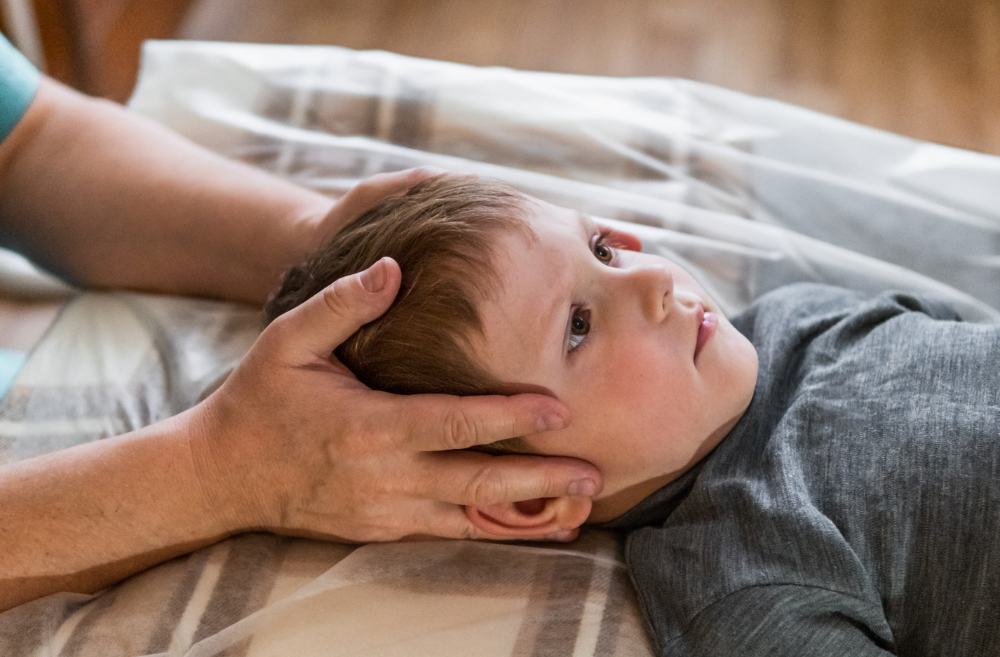By: Red Door Pediatric Staff
As parents, we are always on the lookout for effective therapies that can support our children’s health and well-being. One emerging practice in the field of pediatric physical therapy is craniosacral therapy (CST). In this article, we will delve into what craniosacral therapy entails and how physical therapists are incorporating it into treatment sessions for children. We will also explore potential benefits over time that CST can offer to your child’s overall development.
Understanding Craniosacral Therapy
Craniosacral therapy is a gentle, non-invasive approach that focuses on the evaluation and treatment of the craniosacral system, which includes the structures surrounding the brain and spinal cord. It involves light touch techniques to enhance the functioning of the central nervous system, promote self-healing, and restore balance within the body.
Integration of Craniosacral Therapy in Pediatric Physical Therapy
Physical therapists, specializing in pediatrics, have recognized the potential benefits of incorporating CST into their treatment sessions. By adding this technique to their toolbox, they can address a broader range of conditions and provide a holistic approach to care. Here are a few ways physical therapists are incorporating craniosacral therapy into pediatric treatments:
- Individualized assessment: Physical therapists thoroughly evaluate each child’s condition, taking into account their medical history, symptoms, and specific needs. CST may be recommended if it aligns with the child’s treatment goals.
- Targeted intervention: Based on the assessment, physical therapists utilize CST techniques to address dysfunctions in the craniosacral system. These gentle techniques can help release tension, improve mobility, and enhance overall nervous system function.
- Complementary approach: Craniosacral therapy is often integrated with other physical therapy interventions, such as therapeutic exercises, manual therapy, and sensory integration techniques. This comprehensive approach ensures a well-rounded and tailored treatment plan for each child.
- Collaboration with other healthcare professionals: Physical therapists who practice CST often collaborate with other healthcare providers, such as pediatricians, occupational therapists, and speech therapists. This interdisciplinary approach ensures that the child receives comprehensive care and benefits from the expertise of multiple specialists.
Potential Benefits for Children
While research on craniosacral therapy is ongoing, anecdotal evidence and clinical observations suggest several potential benefits for children over time. These may include:
- Improved nervous system function: Craniosacral therapy aims to enhance the functioning of the central nervous system, potentially leading to improved sensory processing, coordination, and overall neurological development.
- Reduced musculoskeletal tension: Gentle techniques used in CST can help release tension in the muscles, fascia, and bones surrounding the craniosacral system. This may contribute to improved range of motion, flexibility, and postural alignment.
- Enhanced relaxation and stress relief: CST promotes deep relaxation, which can have a positive impact on a child’s overall well-being. It may help reduce anxiety, improve sleep quality, and support emotional regulation.
Craniosacral therapy offers a gentle and non-invasive approach to pediatric physical therapy, focusing on the craniosacral system and central nervous system function. As physical therapists integrate this technique into their treatment sessions, they can provide a holistic approach to care, addressing a wide range of conditions in children. While further research is needed, craniosacral therapy shows promise!

